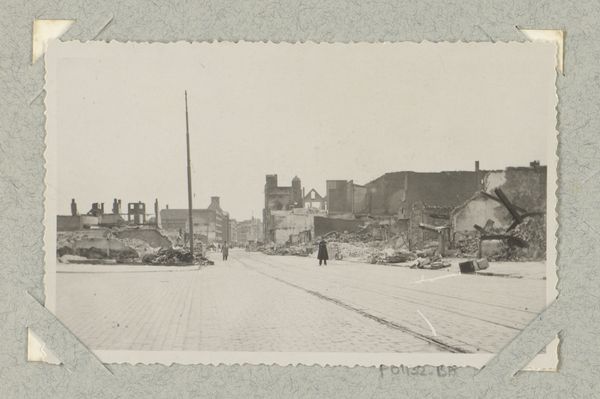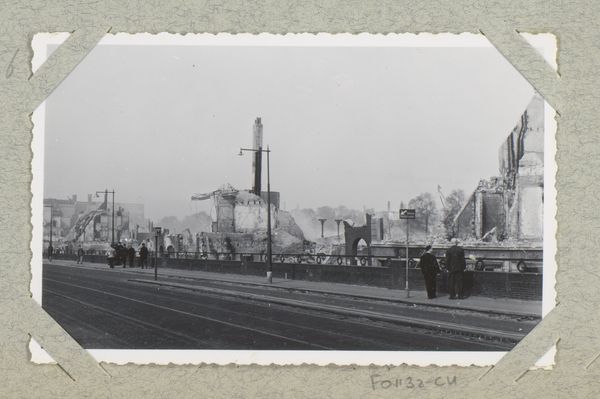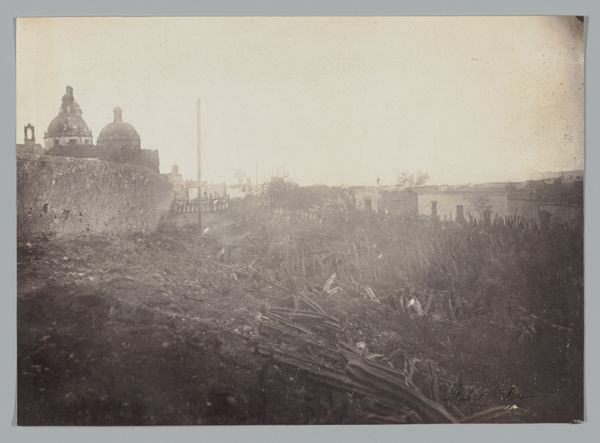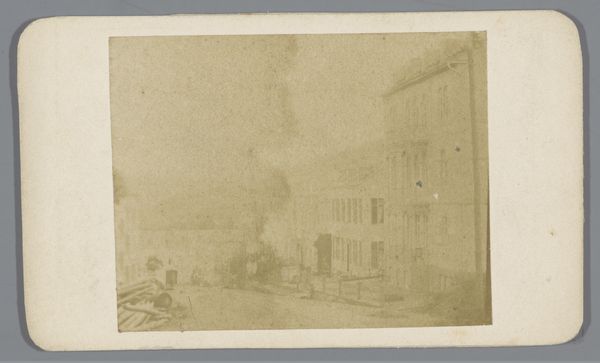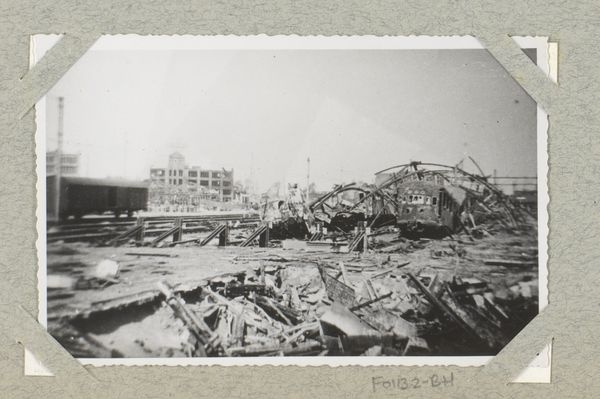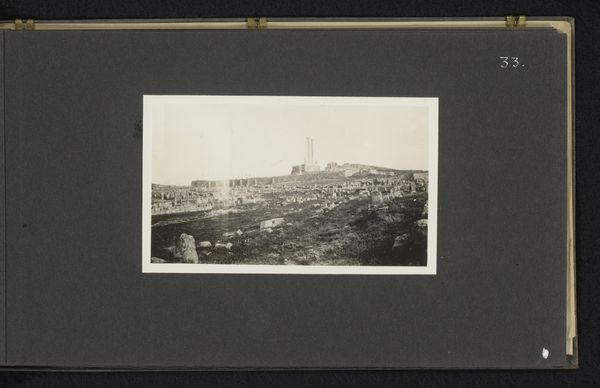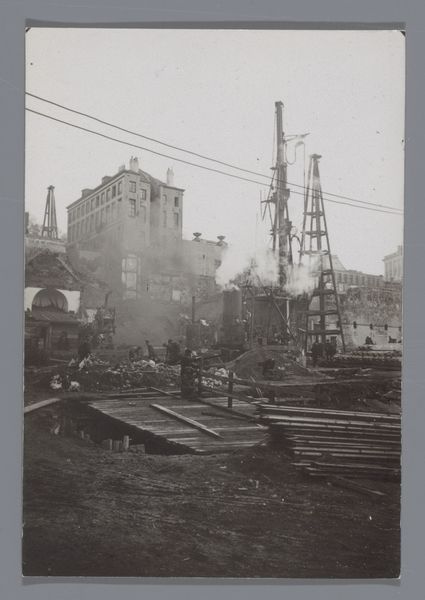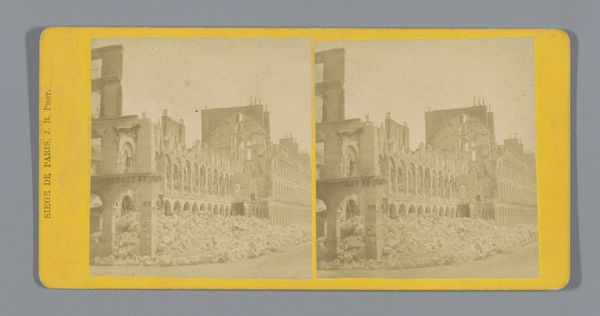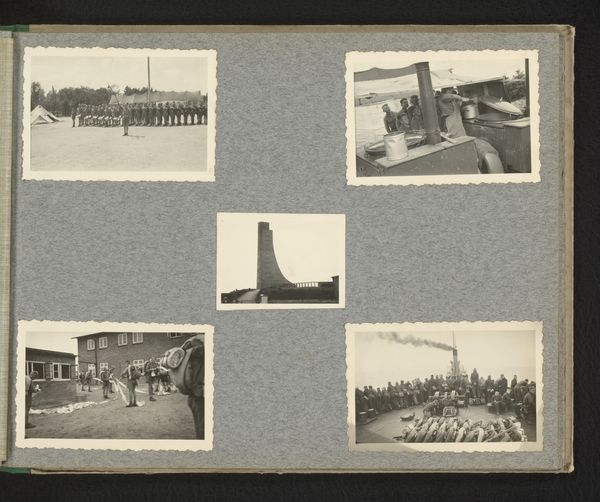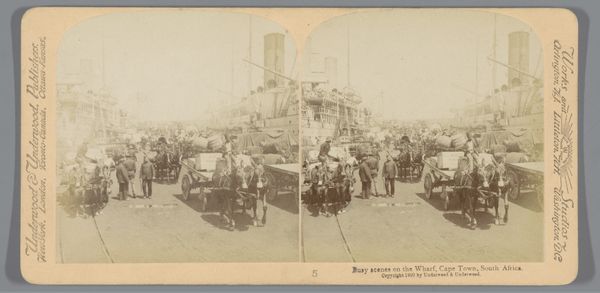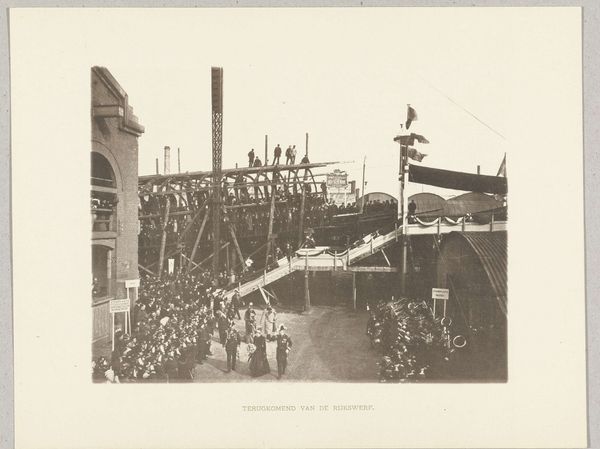
photography, gelatin-silver-print
#
pictorialism
#
landscape
#
photography
#
historical photography
#
gelatin-silver-print
#
realism
Dimensions: height 81 mm, width 110 mm
Copyright: Rijks Museum: Open Domain
Curator: Here we have "Salvage Operations at a Shipwreck," a gelatin-silver print by Folkert Idzes de Jong, likely created between 1905 and 1907. It's a stunning example of Pictorialism in photography. Editor: It's strangely captivating. There's a somber, almost elegiac quality to it. The muted tones lend a dreamlike feeling, despite the stark subject matter of industry and disaster. Curator: Indeed. Notice how de Jong used the soft focus to diffuse the light and create a hazy atmosphere? This was a common technique of Pictorialists who sought to elevate photography to the level of fine art. Think about the labor that went into this image and its afterlife as something displayed. Editor: It evokes the precariousness of human endeavor against the forces of nature. The shipwreck, a symbol of failure, contrasts with the lighthouse, meant to be a symbol of hope and guidance. Is it a futile hope? Curator: That interplay is what makes the image so compelling. The image isn't about pure aesthetics or even simply the historical documentation of an event. What does the image *do* as it shows men extracting materials from a wrecked vessel? How does that affect economies of industry or domestic labor? Editor: I'm also drawn to the two figures in the foreground. They almost seem to be contemplating the scene, giving it a human scale against the industrial wreckage. Their dark silhouettes feel weighed down, too. It’s a meditation on time and loss. What kind of toll do such spectacles demand on our memories? Curator: Precisely. It reveals an interesting tension between the monumental effort to extract and reclaim what's lost, while also underscoring the immense power – destructive power – that human-made goods are subject to when the elements collide. Editor: It is interesting to me that something broken holds our gaze for longer than we think. In the symbol of the wreck, we see the shadow of time pass over labor and innovation and that perhaps they, too, are also fragile and impermanent, as with the figures standing as shadows by its side. Curator: Thank you, this highlights some essential components we will be back with a future piece later in the week! Editor: Thank you for the dialogue!
Comments
No comments
Be the first to comment and join the conversation on the ultimate creative platform.
